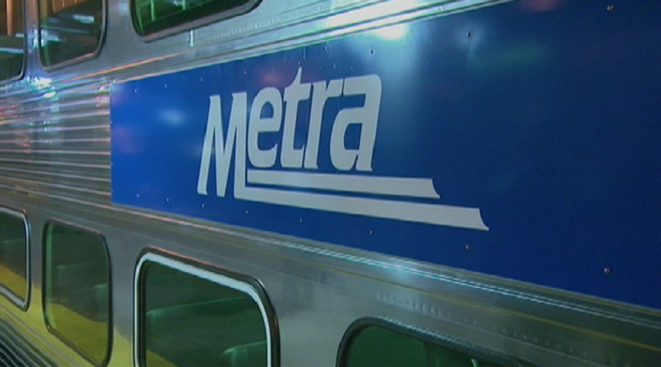The 2023 summer solstice will take place Wednesday morning, but will also mean more than just the start of the season.
The day also marks the longest day of the year and kickstarts what could be a number of solar events.
Here's what you should know:
When is the first day of summer?
The summer solstice takes place at 9:58 a.m. CT Wednesday, June 21.
On Wednesday, Chicago will see 15 hours, 13 minutes and 41 seconds of daylight. Sunset is expected to arrive just before 8:30 p.m.
What is the summer solstice?
Local
For those in the Northern Hemisphere, the summer solstice is the moment when the sun reaches its highest and northernmost points in the sky, according to the Farmer's Almanac.
It is also the day with the longest period of sunlight, or the longest day of the year for 2023.
Feeling out of the loop? We'll catch you up on the Chicago news you need to know. Sign up for the weekly Chicago Catch-Up newsletter here.
"Summer solstice occurs at a precise time when the Northern Hemisphere is at its maximum tilt toward the sun. This is why we get more daylight, and why it’s hotter in the summer months," NBC 5 Storm Team Meteorologist Kevin Jeanes said.
It is considered to be the first day of summer in astronomical terms, though meteorological summer technically began at the start of the month.
Contrastingly, the winter solstice, which takes place on Dec. 21 this year, will mark the start of winter.
"The Sun’s arc has been getting higher in the sky every day since the winter solstice, which occurred in Chicago on December 21, 2022," Chicago's Adler Planetarium reports. "As the Sun’s arc gets higher, daylight hours get longer. On the summer solstice, the Sun’s arc stops getting higher. After that point, the Sun’s arc will appear lower each day, and daylight hours will gradually get shorter. It will keep getting lower each day until December 21, the 2023 winter solstice in the northern hemisphere."
What may be surprising, is right now is also the time of year when earth is at its farthest point from the sun in its elliptical orbit, also known as earth’s “aphelion," Jeanes said.
This year’s aphelion happens at 3:06 p.m. on July 6, when earth will be 94.5 million miles away from the sun. On the flip side, earth’s “perihelion”, when earth is closest to the sun, happens in December, when it will be about 91.4 million miles away from the sun.
Sunrise and sunsets during the summer solstice
While the solstice marks the day with the most sunlight, it does not mark the date of the earliest sunrise or latest sunset.
In Chicago, the earliest sunrise, which usually takes place before the solstice, was seen earlier in June.
The latest sunset is still to come, however.
But, according to the Almanac, the sun will set more slowly around the time of a solstice, meaning "it takes longer to set below the horizon."
Days will continue to shorten from here on out.
"Today will be about two seconds shorter than yesterday, June 30 will be 30 seconds shorter than June 29, and eventually we’ll be losing nearly three minutes per day in late September," Jeanes said. "This also means our nights get longer, which is great for stargazers. We’ll actually have a nice view [Wednesday] of Mars, Venus and the moon together in the western sky after sunset. Venus will set at 11:09 p.m., Mars at 11:21 p.m., and the moon at 11:29 p.m."
What will the weather be like?
According to the NBC 5 Storm Team, expect a mostly sunny day with highs in the mid-80s rising to near-90 inland. Things will likely stay cooler in the 70s along the lakefront.
Full forecast here.
More solar events expected
As the summer solstice arrives in the Northern Hemisphere, scientists at NASA say that a busy period of solar events is set to begin, with eclipses and a number of other phenomena taking place.
There will be not one, but two, solar eclipses in the next 12 months, and both will at least be partially visible from the Midwest.
The first will take place on Oct. 14, 2023. While a total eclipse will take place across parts of the southwestern United States, a partial eclipse will also be visible across the Midwest, with about 50% coverage over western Illinois and slightly-less coverage over parts of the Chicago area.
The main event from an eclipse perspective will take place on April 8 of next year, with a total solar eclipse visible across a wide swath of the Midwest. While that will not take place in Chicago, large portions of Indiana, including Indianapolis, will see the total eclipse, which will last for several minutes during the afternoon hours.
Finally, NASA says that the sun is reaching the peak of an 11-year solar cycle, which could cause a variety of impacts in coming months.
Every 11 years, the sun’s magnetic field flips. These flips can cause dramatic changes in activity on the sun’s surface, with solar flares and coronal mass ejections potentially impacting Earth in a variety of ways.
The Northern Lights can become more pronounced and visible in new locations during those times, and radio communications and even electricity grids can be impacted on Earth.



